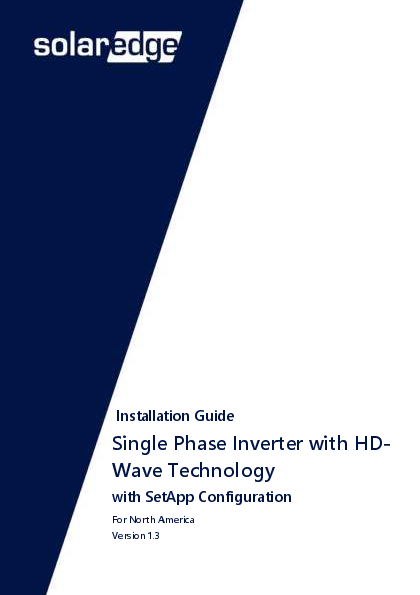Introduction to the SolarEdge Power Harvesting System
This comprehensive installation guide from SolarEdge details the process for setting up their Single Phase Inverters equipped with HD-Wave Technology and SetApp Configuration. Designed for North America, this manual ensures a safe and efficient installation of photovoltaic (PV) systems.
The guide covers critical aspects including:
- Essential handling and safety instructions for installers.
- Detailed procedures for installing Power Optimizers and the SolarEdge Inverter.
- Connecting PV modules, strings, and the AC grid to the system.
- Activating, commissioning, and configuring the system using the SetApp mobile application.
- Setting up communication for monitoring and data reporting.
- Troubleshooting common issues and understanding system indicators.
Adherence to the guidelines provided by SolarEdge is crucial for optimal system performance and safety.
Key Features and Components
The SolarEdge power harvesting solution maximizes energy output from PV installations by employing independent Maximum Power Point Tracking (MPPT) at the module level via Power Optimizers. The system includes the SolarEdge Inverter, which converts DC power to AC power, and a Monitoring Platform for performance tracking.
This document also addresses important compliance information, such as FCC regulations and safety standards.
